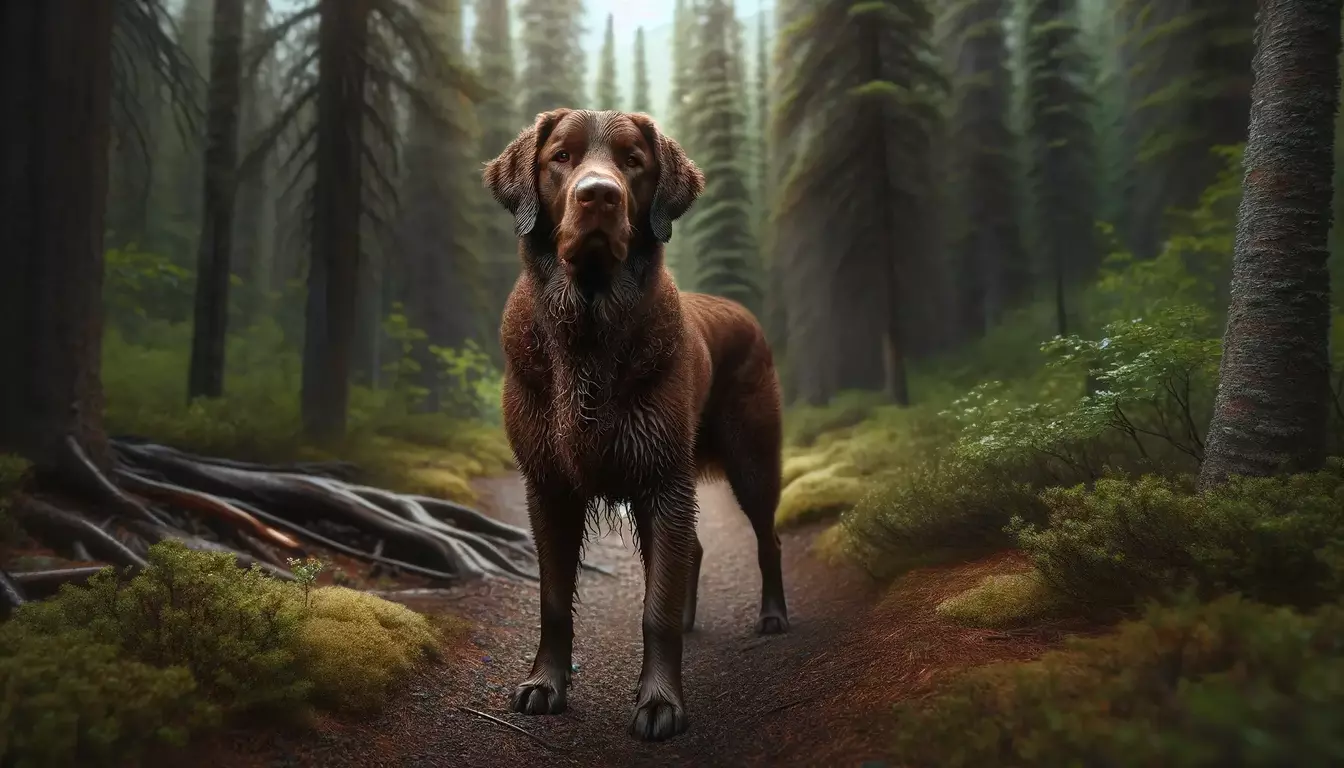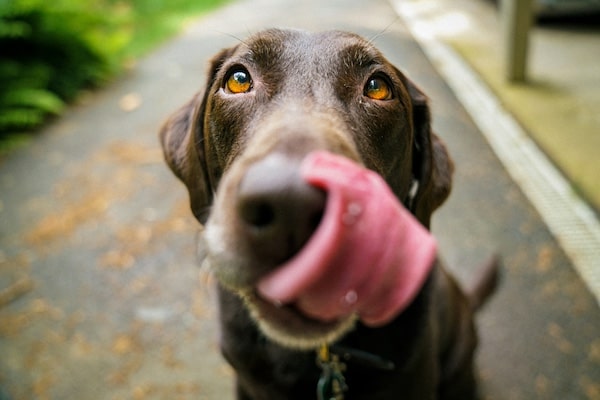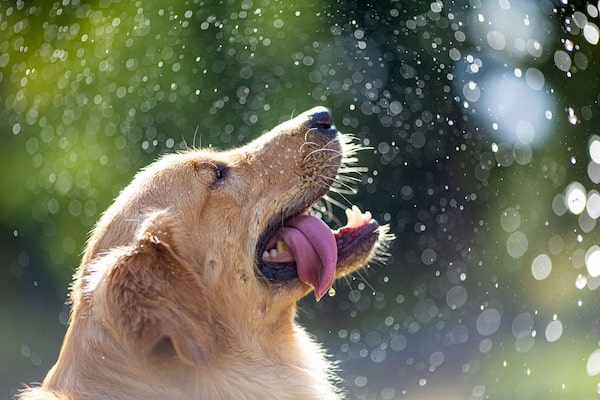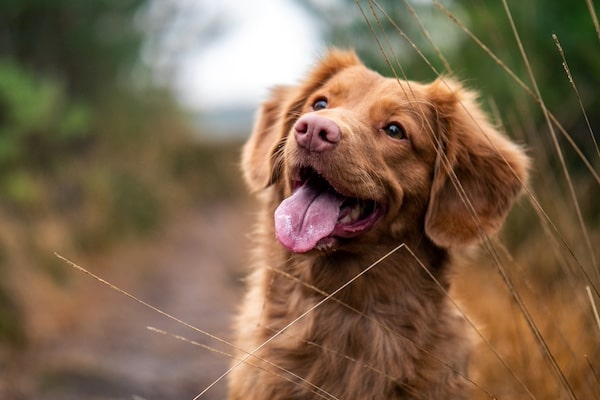Dive into the world of the Chesapeake Bay Retriever, a breed renowned for its resilience and distinctive charm. This guide offers an in-depth look at the breed’s unique traits and characteristics, providing essential insights for anyone considering adding a “Chessie” to their family.
Known for its sturdy build and keen intelligence, the Chesapeake Bay Retriever thrives in active households that can harness its abundant energy and innate work ethic. Future owners will find practical advice on training, socialization, and care tailored specifically to this breed’s needs. Understanding these aspects ensures a harmonious relationship between dog and owner, fostering a bond built on mutual respect and love.
Chesapeake Bay Retriever – Size & Life Expectancy
Height
23-26 inches (male)
21-24 inches (female)
Weight
65-80 pounds (male)
55-70 pounds (female)
Life Expectancy
10-13 years
About the Chesapeake Bay Retriever
The Chesapeake Bay Retriever, affectionately known as the “Chessie,” boasts a rich history rooted in the early 19th century along the rugged shores of the Chesapeake Bay in the United States. This breed’s story begins with a shipwreck in 1807 off the coast of Maryland. Among the rescued cargo were two Newfoundland puppies, named Sailor and Canton, who displayed remarkable skills in water. Local breeders noticed these traits and crossed the Newfoundlands with local retrievers, including the English Otterhound and the Curly-Coated Retriever. The goal was to enhance their stamina, coat texture, and water proficiency, crucial for retrieving waterfowl in the icy Chesapeake waters.
The resulting breed excelled in its role. Chessies are known for their exceptional strength, endurance, and an oily, waterproof double coat, which protects them from hypothermia in cold water. Their sharp eyesight, intelligence, and perseverance made them indispensable to waterfowl hunters. They are capable of marking the fall of multiple birds and retrieving them efficiently, a task they perform with singular dedication and vigor.
Modern Day Status and Popularity
Transitioning from its historical roots, the Chesapeake Bay Retriever has maintained its reputation as a robust and reliable working dog, while also gaining prominence as a favored companion for active families. Recognized by the American Kennel Club in 1878 as one of the earliest breeds, the Chessie remains a popular choice among hunting enthusiasts and outdoor adventurers due to its versatile capabilities and resilient nature.
Today, the breed’s population is stable, with a dedicated following that appreciates both its working abilities and its qualities as a family pet. The Chessie’s loyal and protective demeanor makes it an excellent guardian for the home, yet its gentle and patient side shines through when interacting with children. This balance of traits makes the Chesapeake Bay Retriever a well-rounded companion, adaptable to various roles from a dedicated hunter to a loving family member.
Typical Owners and Cultural Impact
Chessie owners are typically those who lead active lifestyles and have a deep appreciation for nature and outdoor activities. The breed demands regular, vigorous exercise, and mental stimulation, traits that align well with individuals or families who enjoy hiking, swimming, and, of course, hunting. The Chessie’s nature to work closely with humans makes it a perfect partner for activities that require endurance and adaptability.
Moreover, the breed’s heritage and capabilities have made it a symbol of the rugged and resourceful American spirit, particularly in regions where hunting and fishing are not just hobbies but a way of life. The Chesapeake Bay Retriever is not only a part of American canine history but continues to be a living representation of tradition and utility in many rural and coastal communities.
In conclusion, the Chesapeake Bay Retriever stands today as a testament to thoughtful breeding with a purpose. It serves as a bridge between past and present, proving that with careful nurturing of specific traits, a breed can excel in both its traditional duties and its role in modern society. Whether on land or in water, the Chessie remains a beloved figure in the world of sporting dogs, cherished for its strength, intelligence, and loyal heart.
Traits & Characteristics of the Chesapeake Bay Retriever
- Strong and Sturdy: Well-muscled, powerful body suited for rugged activities.
- Waterproof Coat: Dense, oily coat that provides excellent insulation and water resistance.
- Loyal and Protective: Known for their strong protective instincts and loyalty to their family.
- Intelligent and Trainable: Highly intelligent, responds well to training with a confident handler.
- Energetic and Enduring: Requires regular, vigorous exercise; thrives on physical activity.
- Friendly yet Reserved: Approachable but can be reserved with strangers, making a good watchdog.
- Versatile Hunter: Outstanding hunting dog with great skills in tracking and retrieving, especially in water.
Owning a Chesapeake Bay Retriever
Embarking on the journey of owning a Chesapeake Bay Retriever promises both reward and adventure. This robust and intelligent breed not only excels in physical activities but also provides companionship and security. Potential owners must understand the breed’s specific needs to foster a healthy and happy life for their canine friend. This guide explores crucial aspects such as health, exercise, grooming, nutrition, and training to help you prepare for life with a “Chessie.”
Health
Chesapeake Bay Retrievers are generally robust, but like all breeds, they face certain health challenges. Common issues include hip and elbow dysplasia, which can be mitigated through responsible breeding practices. Owners should ensure their Chessie undergoes regular veterinary check-ups to catch any signs of progressive retinal atrophy or other genetic conditions early. A proactive approach to their health also includes maintaining a healthy weight to prevent joint stress and other complications. Regular exercise and a controlled diet play critical roles in sustaining their overall well-being.
Exercise
A Chesapeake Bay Retriever thrives on activity. Originally bred for physically demanding tasks like retrieving game from icy waters, this breed possesses a high energy level that requires regular, vigorous exercise. Ideal activities include swimming, running, and retrieving games, which not only cater to their physical needs but also stimulate their mind. Daily exercise is essential to keep a Chessie healthy and content. Owners should aim for at least one to two hours of physical activity a day, ensuring a mix of both aerobic and mental challenges to keep the dog engaged and fit.
Grooming
The coat of a Chesapeake Bay Retriever is both unique and functional. It features a dense, waterproof outer layer and a woolly undercoat that provides insulation. This double coat requires regular grooming to maintain its condition and functionality. Brushing a few times a week helps remove dirt and loose hair, while occasional baths will keep the coat clean without stripping its natural oils. Pay special attention during the shedding seasons of spring and fall when increased brushing is necessary to manage shedding and maintain coat health.
Nutrition
Proper nutrition is fundamental for a Chesapeake Bay Retriever’s health and energy. A balanced diet rich in proteins and fats supports their active lifestyle and maintains their muscular build. It’s important to choose high-quality commercial dog food or consult with a vet about a suitable home-cooked diet. Owners should avoid foods that are high in empty calories or fillers like corn and soy, which can lead to weight gain and other health issues. Also, be cautious with human food snacks, as some, like chocolate and onions, are toxic to dogs.
Training
Training a Chesapeake Bay Retriever can be both rewarding and challenging due to their intelligent and independent nature. They respond well to consistent, positive reinforcement training methods. Early puppy training and socialization are crucial to develop a well-mannered adult dog. Introduce the puppy to various environments, people, and other animals to foster adaptability and confidence. Continuous training and mental engagement can help harness their natural abilities and prevent behavioral issues, making them ideal companions for active, committed owners.
By addressing these five key areas, owners can provide a healthy, fulfilling environment for their Chesapeake Bay Retriever, ensuring a loyal and active companion for years to come.
The Chesapeake Bay Retriever Standard
The Chesapeake Bay Retriever, a breed celebrated for its resilience and skill in waterfowl retrieval, adheres to a distinct breed standard that highlights both its physical and temperamental qualities. This standard serves as a blueprint for breeders and judges, ensuring that the essential characteristics of the breed are preserved and promoted.
General Appearance
The Chesapeake Bay Retriever presents a powerful, well-proportioned build, designed for endurance and strength. The overall impression is one of a sturdy, athletic dog, equipped with a broad chest and muscular limbs. The breed moves with a smooth, efficient gait, displaying power and good coordination. The distinctive coat, a hallmark of the breed, is thick and waterproof, ideally suited to the challenging conditions of icy waters.
Size and Proportion
Males typically stand about 23 to 26 inches at the shoulder, while females are slightly smaller, measuring around 21 to 24 inches. The body is slightly longer than tall, contributing to its balanced and solid appearance. Weight should be in proportion to the height, maintaining a fit and functional physique.
Head
The head of a Chesapeake Bay Retriever is broad and round with a medium stop and a muzzle of moderate length; it should appear neither overly refined nor clumsy. The eyes are very distinctive, set wide apart, large and clear, with hues ranging from yellowish to amber, reflecting a keen, alert expression. The ears are small, set high on the head, and hang loosely, framing the face.
Coat and Color
The coat is short but dense, with a harsh, oily outer layer and a woolly, fine undercoat for insulation against cold water. The texture of the coat is slightly wavy on the shoulders, neck, back, and loins. Color plays a significant role in the breed standard; the accepted shades range from dark brown, sedge, to deadgrass, with the tone ideally blending with the dog’s working environment.
Temperament
Temperament is as important as physical attributes in defining the breed standard. The Chesapeake Bay Retriever should exhibit an excellent working character, showing determination and a keen willingness to work, especially in water. The breed is renowned for its intelligence, loyalty, and protective nature. While generally friendly and obedient, the Chessie can show a moderate level of reserve with strangers, aligning with its role as a vigilant companion.
Judging the Breed
When judged at shows, adherence to these standards is critical. Judges evaluate the Chesapeake Bay Retriever not only for conformity to physical traits but also for behavior that indicates the dog’s potential as a competent working retriever. Movement, coat, general appearance, and temperament are all scrutinized to determine how closely each dog approaches the breed ideal.
By maintaining these standards, breeders and judges ensure that the Chesapeake Bay Retriever continues to excel in both its traditional roles and as a companion, preserving the integrity of this remarkable breed for future generations.
Chesapeake Bay Retriever – FAQ
Explore the fascinating world of the Chesapeake Bay Retriever with our comprehensive FAQ. Here, you’ll find answers to the most common questions about the breed’s characteristics, care requirements, and suitability as a family pet, helping you better understand this loyal and hardworking companion.
Alternatives to a Chesapeake Bay Retriever
Several dog breeds share similarities in size, traits, and characteristics with the Chesapeake Bay Retriever, making them appealing to enthusiasts of robust, active canines. The Labrador Retriever, for example, mirrors the Chesapeake in its love for water and retrieving, although it typically exhibits a more outgoing and friendly temperament. Both breeds showcase a strong build and an affinity for outdoor activities, making them excellent companions for adventurous families.
Similarly, the Golden Retriever shares the Chesapeake’s intelligence and versatility. While Golden Retrievers tend to have a gentler demeanor and a slightly longer coat, they too excel in tasks that involve retrieving and water activities. Their trainable nature and loyalty align closely with those of the Chessie.
Another comparable breed is the Flat-Coated Retriever. Known for its cheerful and energetic personality, this breed also possesses a strong, muscular build and a love for water, much like the Chesapeake. The Flat-Coated Retriever is slightly taller and has a distinctive long, glossy coat but shares the Chesapeake’s enthusiasm for rigorous physical activities and outdoor adventures.
The Newfoundland, though larger and more imposing in size, also has a similar disposition and physical capabilities. This breed is exceptionally strong and equipped with a water-resistant coat, ideal for swimming and water rescue, echoing the Chesapeake’s abilities in aquatic environments.
Each of these breeds shares a common bond with the Chesapeake Bay Retriever through their love of water, strong physique, and active lifestyle, yet each also brings its unique characteristics to the table, offering a variety of choices for potential dog owners with a taste for versatile, energetic canine companions.





